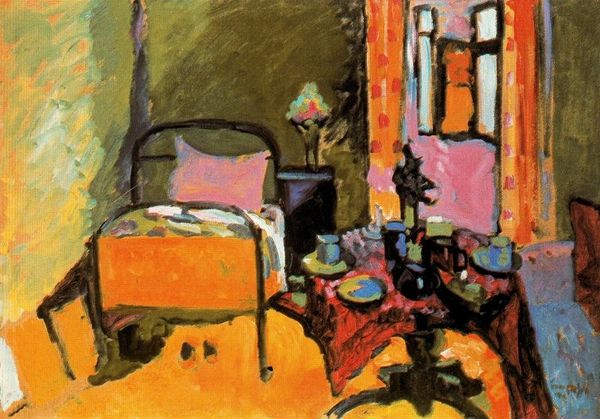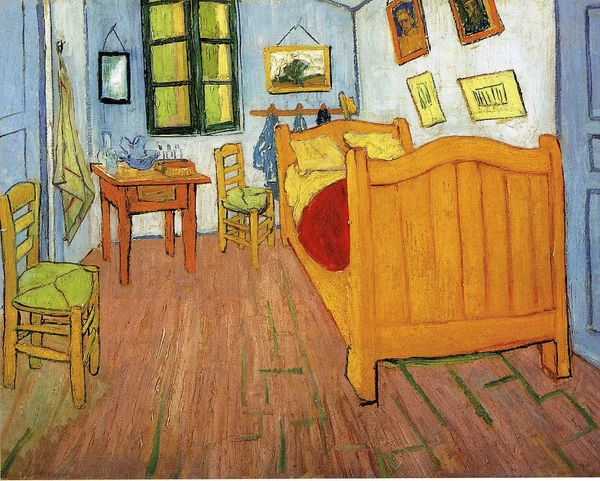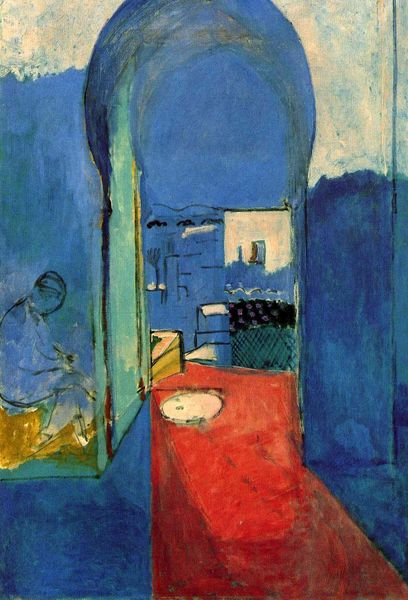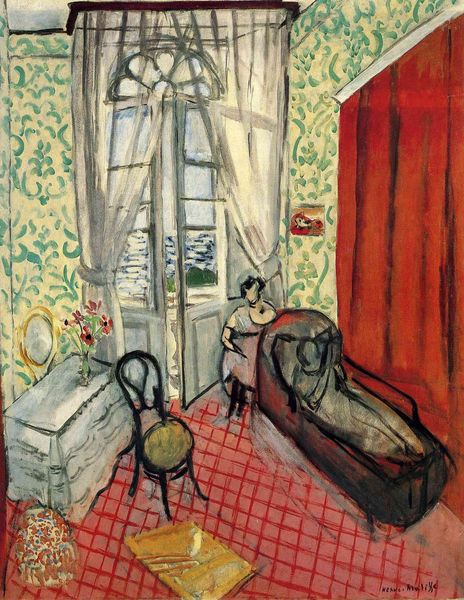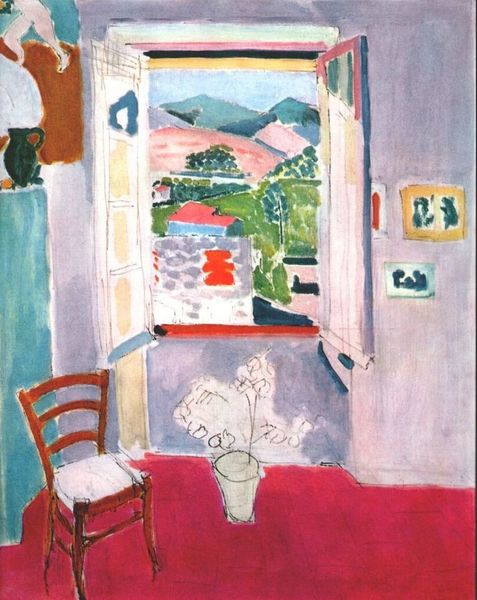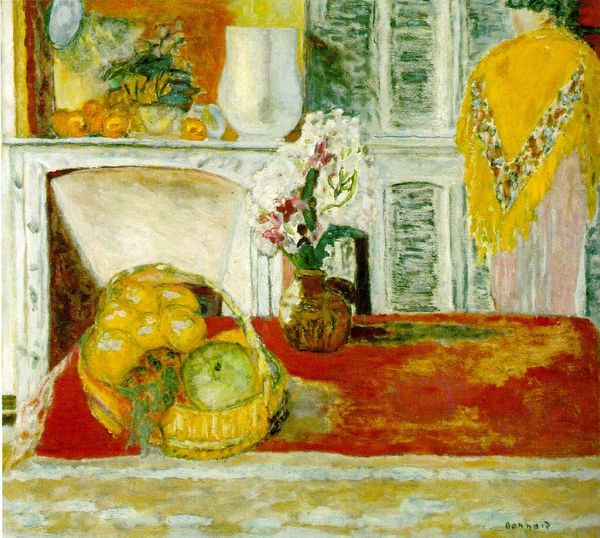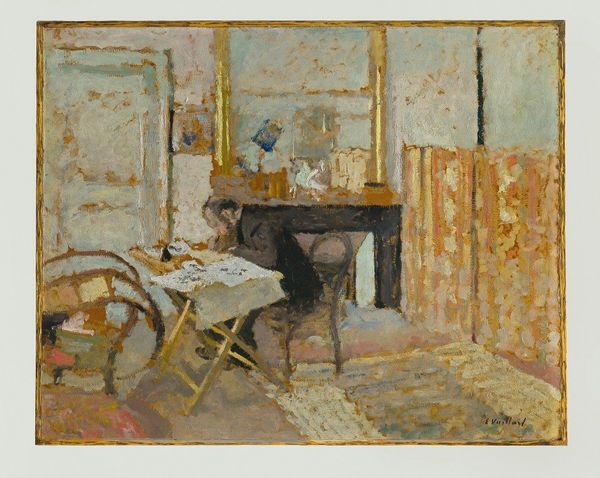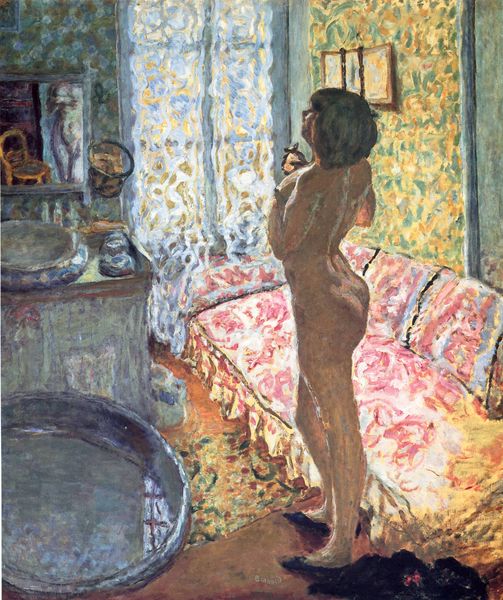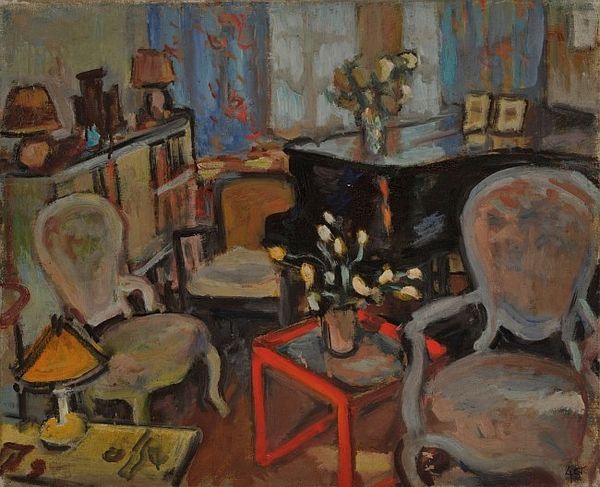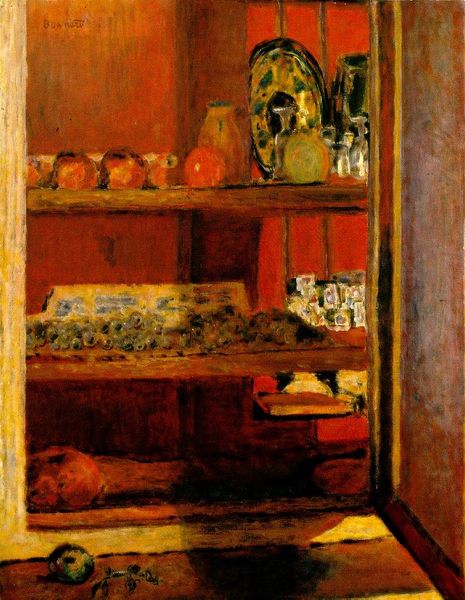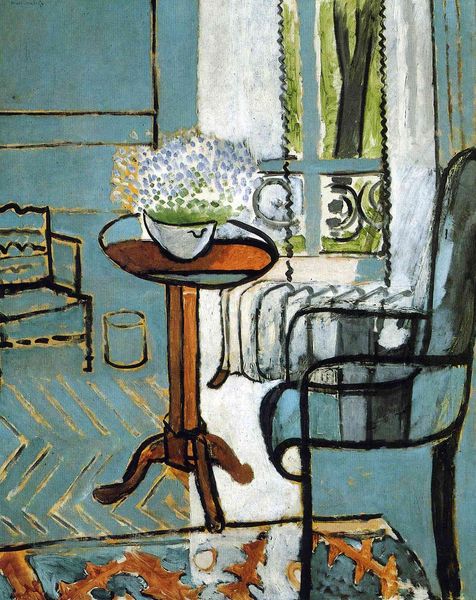
painting, oil-paint
#
art-nouveau
#
painting
#
impressionist painting style
#
oil-paint
#
landscape
#
german-expressionism
#
expressionism
#
modernism
#
expressionist
Dimensions: 50 x 65 cm
Copyright: Public domain
Curator: Wassily Kandinsky painted "Interior (My Dining Room)" in 1909. It gives us a peek into his life in Munich just before he moved into even more radical abstraction. What do you make of it at first glance? Editor: Claustrophobic, almost oppressively so! The colors feel dissonant – that intense red wallpaper against the vivid greens of the furniture and doorframes… It creates a very unsettling feeling, even though it depicts an intimate space. Curator: Well, it's certainly charged with emotion, and this reflects a key characteristic of German Expressionism. This movement really broke away from realistic representation to convey inner feeling, often using jarring colors and simplified forms. Kandinsky, deeply embedded in the Munich art scene, certainly embodies that ethos here. He co-founded the Neue Künstlervereinigung München or NKVM, which stood for this type of radical expression. Editor: Yes, the flattening of space is remarkable. The patterning of the wallpaper, the tablecloth – they all compete for attention, refusing to recede. It pushes everything forward, contributing to that claustrophobic effect. The brushstrokes themselves are quite visible. It feels very immediate, unfiltered. Curator: That heightened immediacy is deliberate. Kandinsky aimed to make his paintings more evocative through expressive use of color, he called it “spiritual” art. Before the first World War artists pushed against tradition, and there was a search for new forms to depict the human condition amid increasing industrialization, and widespread alienation. Editor: Looking at the green dresser and those rounded vases sitting on top – I sense a struggle between representation and pure form. While they're recognizably objects, their simplified shapes and bold coloration seem more about the interaction of color and line than accurately portraying reality. Curator: Absolutely, the move toward abstraction allowed artists like Kandinsky to explore these new modes of expression and delve into subjective emotional territory. The turn from simply reflecting to interpreting experience through bold color and simplified shape was really impactful to subsequent artists and thinkers alike. Editor: It’s an interesting prelude, actually, considering how soon after this Kandinsky veered toward total abstraction. This offers a fascinating snapshot of his journey – the familiar becoming unfamiliar. Curator: Precisely. It underscores the transformative moment he and his peers faced during that early period of the 20th century. Thanks for pointing out the fine nuances!
Comments
No comments
Be the first to comment and join the conversation on the ultimate creative platform.
